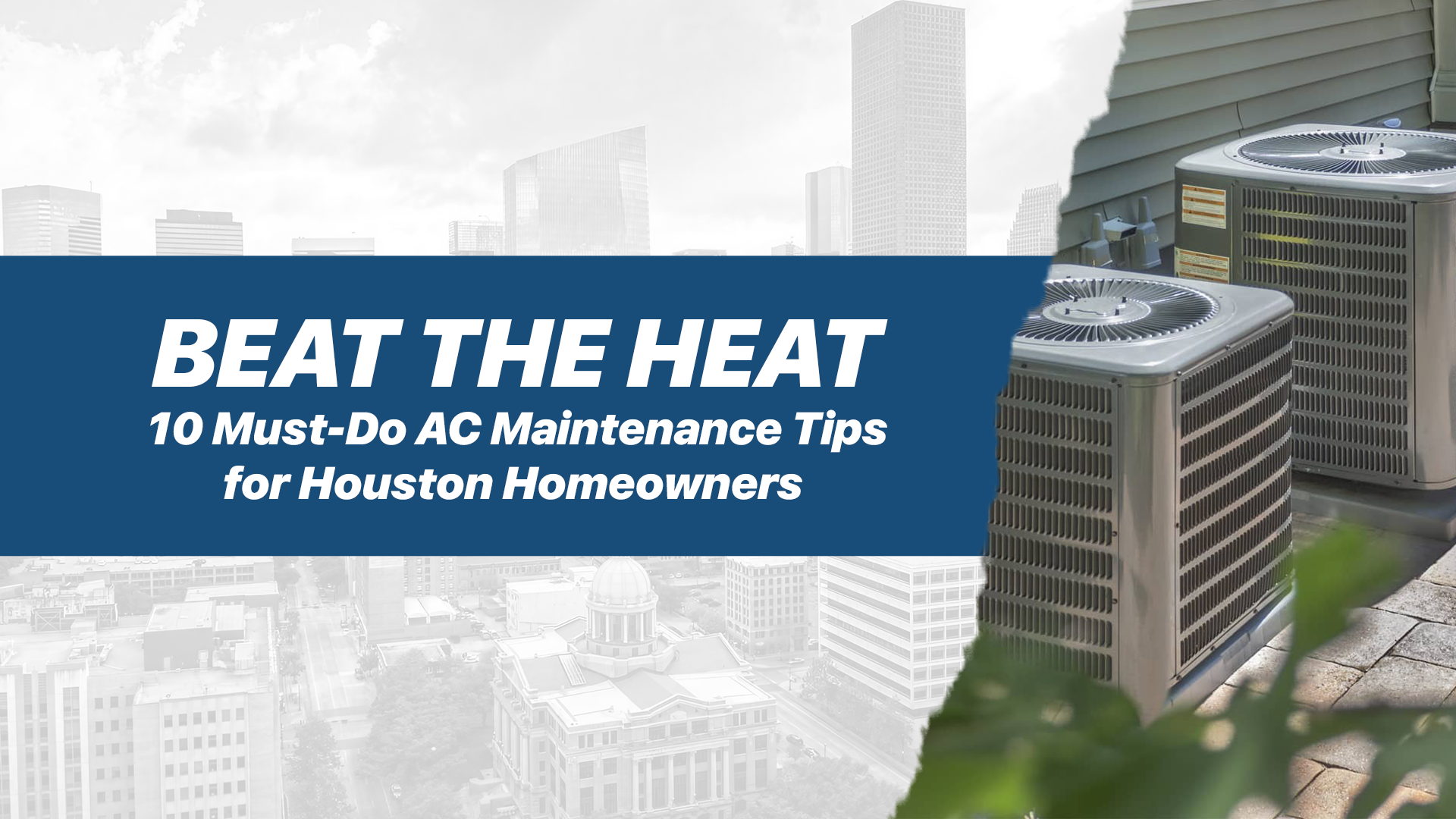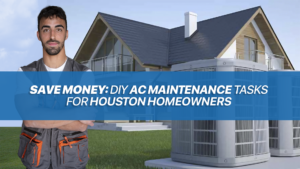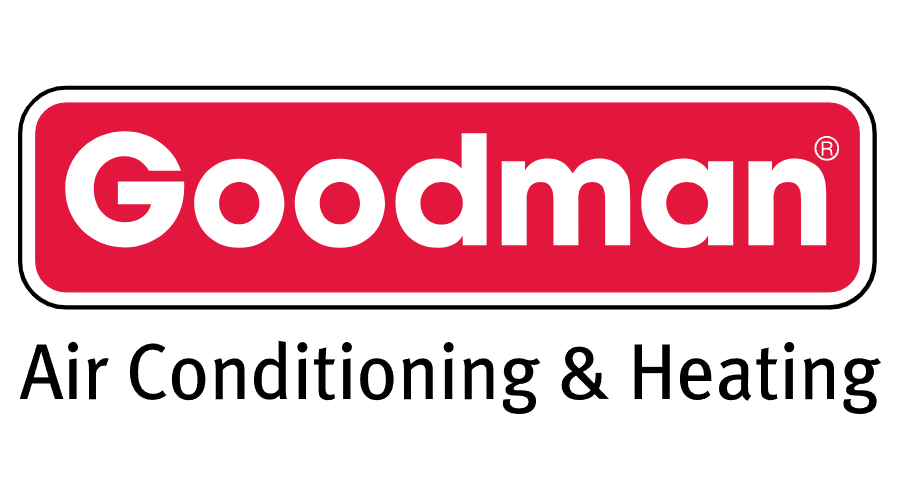Let’s get to know the top 10 must-do AC Maintenance Tips for Houston Homeowners. As a Houston homeowner, you know that having a working air conditioner during the sweltering summer months is non-negotiable. With average highs in the 90s from June through September, AC breakdowns are one of the biggest pain points for local residents trying to stay comfortable indoors. But did you know that proper preventative ac maintenance can help you avoid costly AC repairs and keep energy bills in check? By being proactive, you can catch small issues before they turn into huge problems. We’ve put together a list of 10 must-do AC maintenance tips specifically for Houston homeowners looking to beat the heat this summer.
Air filters play a crucial role in trapping dust, dirt, pollen, and other particles before they circulate through your home. As these filters become clogged, airflow is restricted, forcing your AC system to work harder. This leads to higher energy usage and wear and tear on components. Experts recommend changing your filters every 30-90 days during peak usage seasons. For Houston, aim to swap filters monthly from May to October when youre running the AC nonstop. If you have pets or allergies, bi-weekly changes may be needed.
Mark your calendar with reminders so you dont forget this quick but important task. Keep extra filters on hand to make the process fast and hassle-free. A clean filter means cleaner indoor air and big savings on electricity bills.
Outdoor condenser units are vulnerable to leaves, grass clippings, dirt, and other debris brought in by wind and rain. These can block airflow, reduce efficiency, and lead to overheating. Make it part of your seasonal maintenance routine to carefully clear away any accumulated debris around the condenser using a hose or soft-bristle brush. Dont forget to check the fins for damage too. Straighten any bent fins with a fin comb to allow optimal airflow. Also, trim back thick bushes or branches that may be obstructing air circulation around the unit. Anything limiting air intake will force the system to work harder than necessary.
In addition to the outdoor condenser coil, your AC system also has evaporator coils inside the furnace or air handler. These coils absorb heat from your homes air as it circulates. Dirt and dust buildup on these coils also obstructs proper airflow. Professional deep cleaning of indoor evaporator coils should be done annually by a certified HVAC technician. This prevents mold and bacterial growth in addition to improving efficiency. For DIY maintenance in between, use a soft brush attachment and vacuum to gently remove accumulated dust from visible areas of the coils. Just take care not to damage the delicate fins. Keeping coils clean improves both cooling capacity and indoor air quality.
The refrigerant is the substance in your AC system that absorbs and releases heat to create a cooling effect. Over time, refrigerant can leak out due to loose fittings, cracks, or faulty seals. Low refrigerant levels make your AC work harder to try cooling your home, leading to strain on components. While visible leaks may appear around fittings as oily spots, low levels are often invisible to the naked eye. Have a technician perform annual checks to ensure refrigerant levels are optimized for peak performance. They can top it off if needed and detect and seal any leaks. Trying to add refrigerant yourself is not recommended since the specific type and amount used by your AC system varies. Getting this wrong can damage the compressor. Leave it to the professionals to ensure ideal refrigerant charge.
5. Inspect and Replace Seals/Insulation
Your AC system contains many joints and connections sealed to contain refrigerant. The insulation around refrigerant lines also helps maintain proper pressures and airflow. Over time, seals can crack or insulation can become damaged or worn. Have a technician inspect for leaks and replace worn seals/insulation as needed. Catching minor leaks early prevents the need for major repairs down the road. Proper sealing and insulation ensures refrigerant stays where it should for optimal cooling capacity. It also prevents energy loss from cooled air escaping before circulating through your home. Keeping everything tightly sealed maximizes efficiency.
6. Clean and Flush Drain Lines
Your AC system’s condensate drain line carries moisture away from the evaporator coils and out of your home. When dirt, algae, or debris clogs these lines, water can back up and cause major problems. Check drain lines periodically for obstructions. Use a wet/dry vac to clear any gunk or buildup. Flushing with a mixture of vinegar and water also helps keep lines clear. Signs of clogged drains include water pooling around the indoor unit, musty smells, or drywall damage from overflow. By keeping drains clear, you prevent moisture-related repairs.
In addition to routine professional checks, there are some DIY steps you can take to detect refrigerant leaks before they become severe. Start by visually inspecting the outdoor condenser unit and exposed refrigerant lines for signs of oil residue. Oil spots near connections or around the compressor are a telltale sign of leaks. You can also pick up a refrigerant leak detector kit for under $30. These contain a liquid or dye that you add to the system. The kit includes a UV light that makes the dye glow vividly at the source of any leaks. Early detection gives you lead time for repairs.
8. Test Capacitors
The capacitors in your AC system help start the compressor and fan motors when the unit first turns on. Bad capacitors that fail to hold a charge can put extra strain on the motors and compressor, shortening their lifespan. Testing and replacing capacitors is a fairly easy DIY task if you’re comfortable working with electrical components. Otherwise have a technician test capacitors annually and replace any that are showing signs of failure. This preventative maintenance can stave off more costly repairs down the line. Think of capacitors as the battery for ignition that ensures a smooth start.
9. Clean and Lubricate Motors
The fan motors that blow air across your evaporator and condenser coils also require periodic maintenance for peak performance. Dust buildup on motor windings causes overheating. Lack of lubrication leads to excessive wear. Carefully vacuum accessible motor windings to remove accumulated dust and debris. Use a small brush or cotton swab to clean fins and tight spaces. Then lubricate motors with a few drops of electric motor oil at oil ports. Well-lubricated and dust-free motors run cooler and more efficiently. This extends the operating life of this essential AC component.
In addition to routine filter changes and clearing debris, having a professional tune-up before peak cooling season can identify and resolve small issues before they cause breakdowns. A pre-season inspection, cleaning, and optimization ensures your AC is ready for the brutal Houston heat. Technicians check refrigerant levels, seals, capacitors, motors, coils, and all components. They also identify areas of concern for future monitoring or repair. Don’t wait until your AC fails in the dead of summer. Schedule a tune-up in early spring so any needed parts or repairs can be addressed well before scorching temperatures arrive. A small investment in preventative care prevents costly emergency service calls down the road.
Keep Your Home Cool and Comfortable
By being diligent about AC maintenance, Houston homeowners can keep repair costs down and energy efficiency up. Don’t wait until you have an expensive breakdown or sky-high electricity bill before taking action. Implement these seasonal care tips throughout the year to extend the life of your system. And be sure to call a trusted local AC company like Turbo Home Services at (281) 626-5938 for professional repairs, tune-ups, and installations.
With proper maintenance and care, your AC will keep your home cool and comfortable for years to come. Don’t suffer through another sweltering Houston summer. Take control of your indoor comfort with this comprehensive AC checklist. Stay cool, Houston!









